How to Improve Your Child’s Balance
Balance problems are quite common for children and adults with special needs. Maintaining balance is a complex process that is managed by signals between the brain, ears, eyes, and sensors in the joints and other body parts. This intricate system helps the body monitor and maintain its position as it moves through the day and most people don’t even need to think about it. But if any of these many sensory signals have not developed typically or something impacts their ability to function, it can weaken the ability to maintain balance.
The ability to balance comes into play any time the body is being held upright against gravity. This includes the positions of sitting, kneeling, hands and knees and standing. There are two types of balance:
- Static Balance is the ability to hold steady and still in any position that is upright against gravity.
- Dynamic Balance is the ability to balance as the body is in motion including when transitioning from one position to another.
In order to maintain balance, we also need to be able to appropriately respond to disturbances in balance such as when someone bumps into us or we trip over something lying on the floor. Righting, equilibrium and protective reactions also play an important role in this process.
- Righting reactions come into play when the vestibular system detects that the body is no longer upright and erect. Head righting aligns the eyes with the horizon and the rest of the body follows.
- Equilibrium reactions help to restore balance when the center of gravity is disturbed or displaced. It includes counter-rotation of the head and trunk away from the direction of displacement, and the use of the extremities. This reaction occurs as the body is displaced forward, back or to the sides.
- Protective reactions are required to prevent injury if the equilibrium reactions are unable to restore balance. A protective reaction is occurring when an outstretched arm protects us from hitting our head during a fall. Protective reactions also occur forward, to the sides and back.
Balance therapy, also called vestibular rehabilitation addresses problems with balance. In recent years, our understanding of the brain and nervous system and how it acts as a central control for coordinating the many factors that affect balance has taken great strides forward. This has allowed Balance and Vestibular Rehabilitation to become more focused and effective. By purposefully evoking the bodies balance and equilibrium reactions these responses can become more rapid and stronger. This can lead to improved functional balance which is the name for the balance that we rely on in all our activities of daily living. Taking care to ensure that core strength is adequate to support the body’s attempts to remain upright and balanced is also very important.
There are many resources available that can suggest activities that are used to address balance. A few simple ideas are shared below. It is important to note that only a physical or occupational therapist can determine which activities are appropriate for a child or adult who is having problems with their balance. Before implementing any of the activities suggested here, check for any medical contraindications and seek the supervision or guidance of a trained physical or occupational therapist.
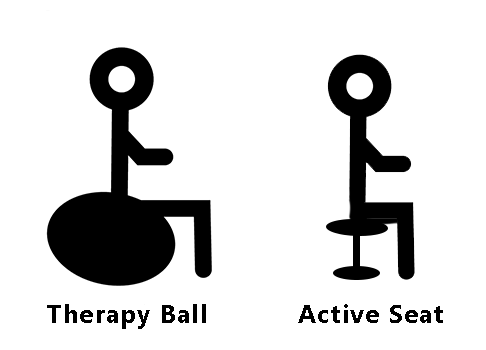

SITTING
While seated in a chair or on a bench with feet flat on the floor, practice reaching down to the floor to pick up puzzle pieces to place in a puzzle held at tabletop height. Play a game of catch with a balloon, a bean bag or a ball. Reach upward and across midline to pop bubbles.
All of these activities can be made more challenging by sitting on a dynamic/ moveable surface such as a therapy ball or balance stool with feet on the floor. To make activities even more challenging, feet can be lifted off the floor as a therapist offers assistance for stability.
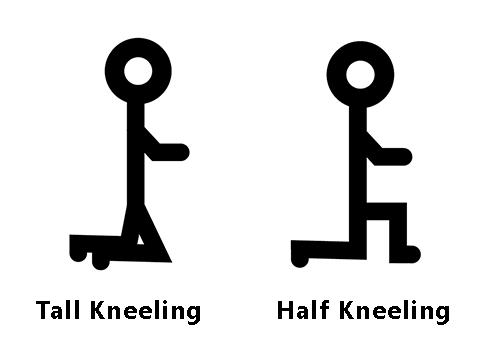

KNEELING
- See how long you can balance in half kneeling or tall kneeling. Once you can balance, are you able to follow the path of a lighted toy or object by turning your head and looking up and down? Can you reach from these kneeling positions?
- Play catch in kneeling.
- Walk in the tall kneeling position. Have a race!
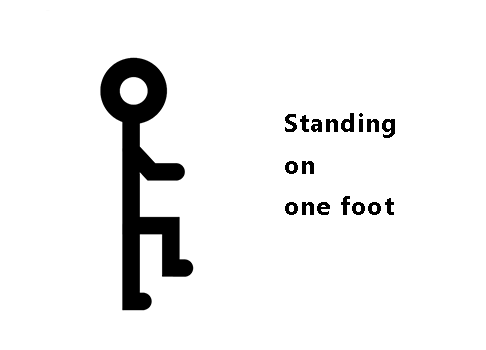

STANDING
- Balance boards and inflatable balance discs are a great way to challenge standing balance.
- Practice standing with one foot on a low stool then progress to resting one foot on a plastic cone.
- Practice standing on one foot, then try hopping on one foot!
- Practice kicking a ball.
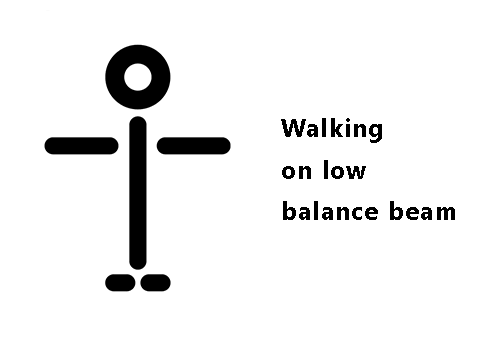

WALKING
- Practice walking across couch cushions placed on the floor.
- Practice walking on a variety of surfaces such as grass, gravel and inclines.
- Walk heel to toe on a taped line on the floor then progress to walking on a balance beam raised off the floor. Start with arms extended out to the sides then try with hands on hips.
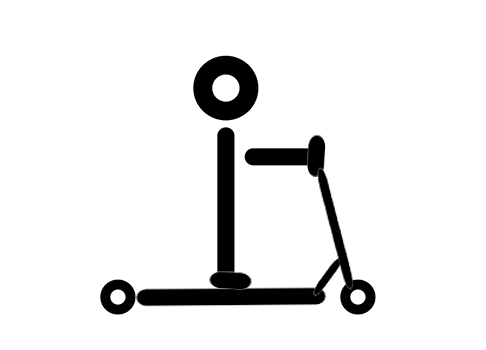

BALANCE BIKES are two-wheeled pedal-less bikes. They are a great way to teach toddlers as young as 18 months how to balance on two wheels.
SCOOTERS are another great way to address developing balance skills in young children. Kids can often learn to propel a kick scooter before they can pedal and steer a bicycle.
Adaptive Equipment can provide the tools and materials for creative activities to make therapeutic intervention for balance and vestibular rehabilitation effective and enjoyable. If you’re looking for Therapy Balls, Wobble Chairs, Balance Bikes and more, Adaptivemall.com can help!

